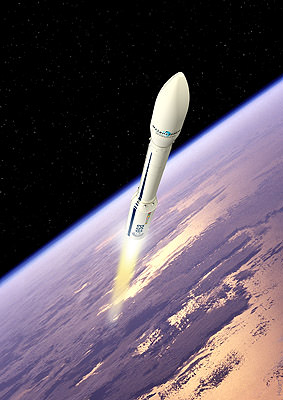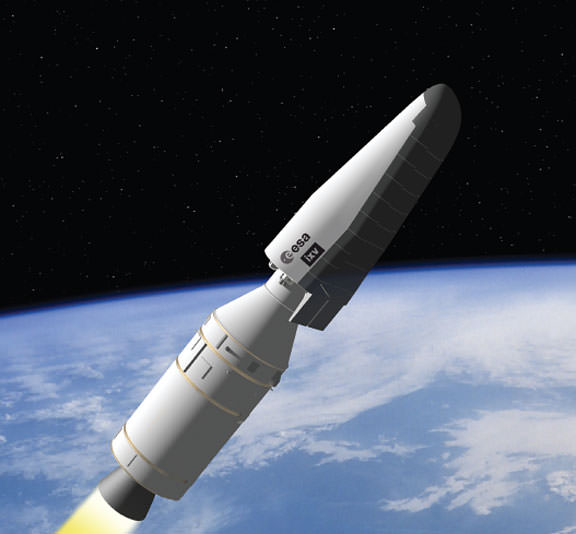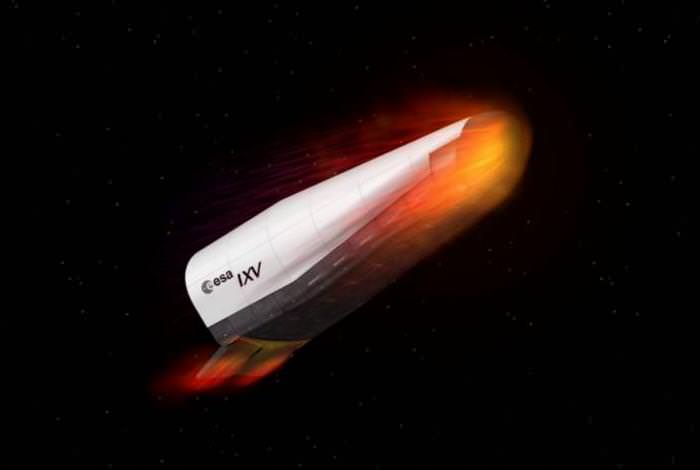[/caption]
ESA and Arianespace have signed a contract planning the launch of ESA’s new IXV (Intermediate eXperimental Vehicle) on Europe’s new Vega Rocket in 2014. Vega is Europe’s new small launch system and it is designed to complement the heavy Ariane 5 and medium Soyuz Rocket systems launched from French Guiana.
The small rocket is capable of a wide range of payloads up to 1.5 tonnes, compared to Ariane 5 which can lift 20 tonnes, making it especially suitable for the commercial space market. The Vega Rocket will launch the IXV into a suborbital trajectory from Europe’s Spaceport in French Guiana, IXV will then return to Earth as if from a low-orbit mission, to test and qualify new critical technologies for future re-entry vehicles.

The IXV will reach a velocity of 7.5km/s at an altitude of around 450km and then re-enter the Earth’s atmosphere gathering data about its flight. The vehicle will encounter hypersonic and supersonic speeds and will be controlled with complex avionics, thrusters and flaps.
Once the vehicle’s speed has been reduced enough, it will deploy a parachute, descend and land safely in the Pacific Ocean.
This flight will record data for the next five VERTA missions (Vega Research and Technology Accompaniment – Programme), which will demonstrate the systems re-usable versatility.
Two launches a year are planned for the new programme and construction of infrastructure including mission control and communications networks is currently underway.
Development and completion of the design, manufacturing and assembly is now underway for a flight window between January and September 2014.

Source: ESA


That’s a pretty cool-looking rocket.
Yes. Lacks linear aerospike engines though. Where is my SSTO VentureStar? :-/